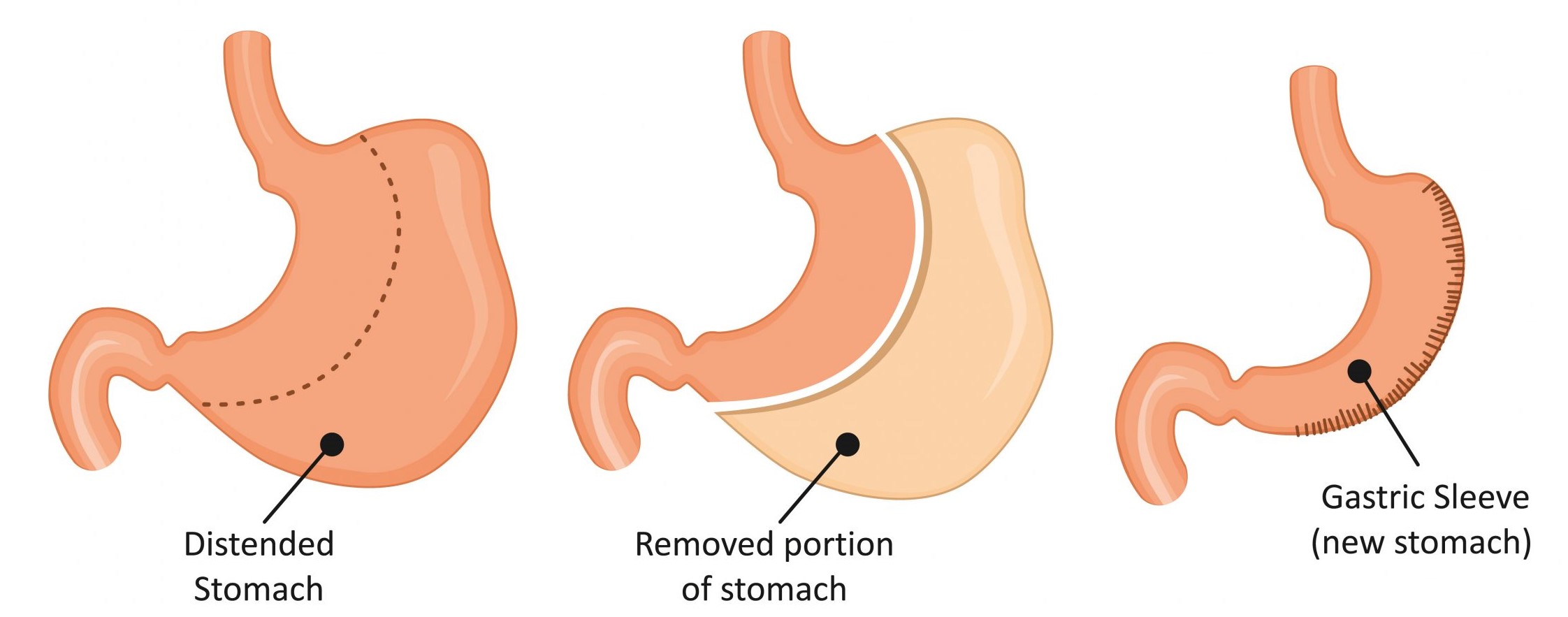


Sleeve gastrectomy, also referred to as gastric sleeve surgery or vertical sleeve gastrectomy, is a highly effective bariatric procedure aimed at helping individuals achieve substantial weight loss. During this surgery, about 75-80% of the stomach is removed, leaving behind a small, tubular portion that resembles a slender banana. This reduced stomach size decreases the amount of food that can be consumed and enhances the feeling of fullness after eating smaller portions.
A significant advantage of this procedure is its impact on ghrelin, a hormone responsible for stimulating hunger. Following the surgery, the reduction in ghrelin levels often leads to a diminished appetite and reduced feelings of hunger between meals.
Sleeve gastrectomy has a proven track record, with patients typically losing 60-70% of their excess weight within the first year—equivalent to approximately 25-30% of their total body weight. In the long term, individuals can expect to shed about 70% of the weight above a BMI of 25. Studies indicate that the success rate for this procedure ranges from 80-90%, making it one of the most reliable weight loss surgeries.
Beyond weight loss, the surgery is known to improve or even resolve various obesity-related health issues. Conditions such as type 2 diabetes, high blood pressure, and sleep apnea often show significant improvement following this procedure. In particular, sleeve gastrectomy has demonstrated long-term effectiveness in managing type 2 diabetes with large numbers of patients maintaining blood glucose levels without need for diabetic medications.
While highly effective, this procedure may not be suitable for everyone. Individuals with a history of severe acid reflux (heartburn) or a known hiatus hernia are usually advised to consider alternative surgical options, as these conditions may worsen after surgery.
The sleeve gastrectomy procedure is typically done using minimally invasive laparoscopic techniques. Small incisions in the upper abdomen are used to access and remove most of the stomach. The remaining section functions as a smaller reservoir for food while leaving the small intestine unchanged, allowing for normal digestion and nutrient absorption. This approach helps control portion sizes and reduces hunger without altering the digestive process.
Sleeve gastrectomy is a widely performed and effective weight loss surgery that not only facilitates significant weight reduction but also promotes better overall health. By addressing physical and hormonal factors related to hunger, it empowers individuals to achieve lasting results and improve their quality of life.